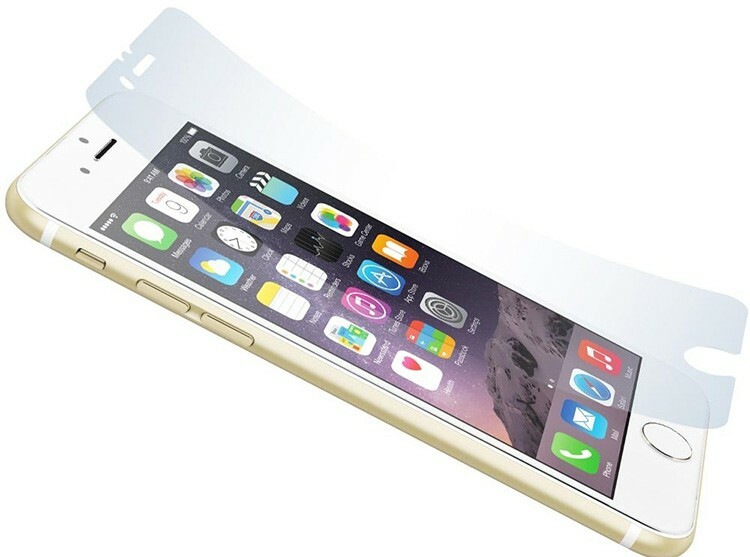
CONTENT
- 1 What is an accessory and its varieties
- 2 DIY film sticker
- 3 How to glue the film, or some useful tips from the editor
- 4 Which is better - glass or film
What is an accessory and its varieties
Before moving on to the question of how to stick the film on the phone, you need to decide on the purpose of this item and the varieties that are on the market.
What is protection for?
The main purpose of the protective accessory is to protect the gadget's display surface from damage (chips, scratches) and fingerprints. By its structure, the film belongs to materials with increased strength and is made of high quality polymers. In this case, the last indicator of the material will affect the elasticity of the accessory.
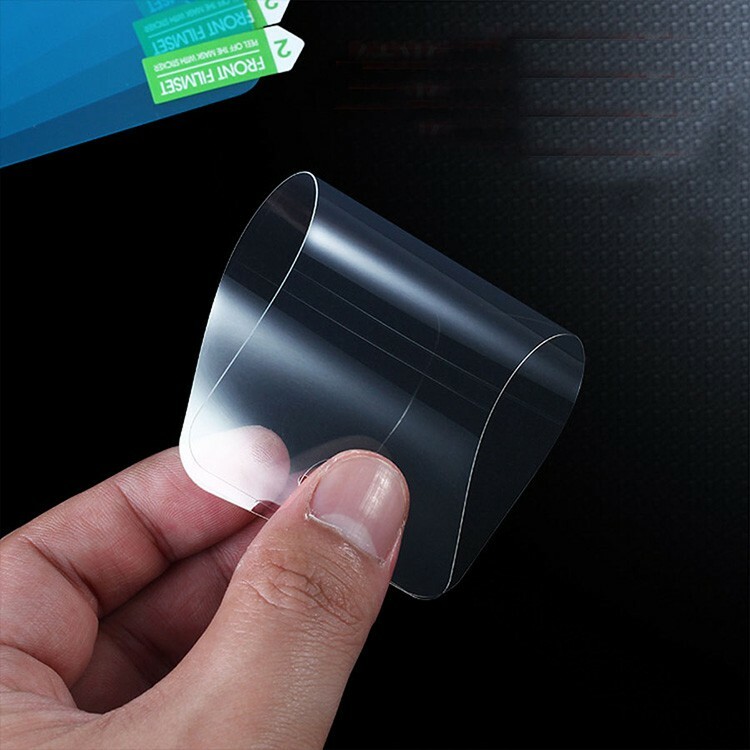
FOR YOUR INFORMATION!
Usually, films are produced for specific smartphone models, but there are universal options that can be used with any phone. Such sheets of plastic have an applied mesh of lines, which facilitates the manufacture of a protective coating for a certain diagonal.
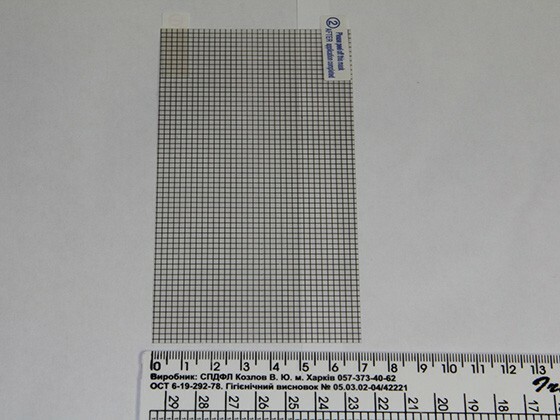
Types of film coating
There are many criteria for dividing an accessory: by the type of attachment on the screen, dimension, and external design. Before proceeding with the sticker of a protective film with your own hands, you need to decide which type is most preferable for a particular smartphone model or is simply more convenient to use.
Fixation option
According to this parameter, the typology of protective film coatings assumes division into two main options:
- Static - a thin silicone coating is used as a basis for holding the protective accessory on the display surface. This variety is reusable (they can be removed and washed) and the absence of bubbles, if you know how to properly glue the film on the phone.
- Adhesive - an adhesive base is used. The accessory can be removed for washing, but you should know how to put the film on the phone without bubbles, since reapplication threatens the formation of such an artifact.
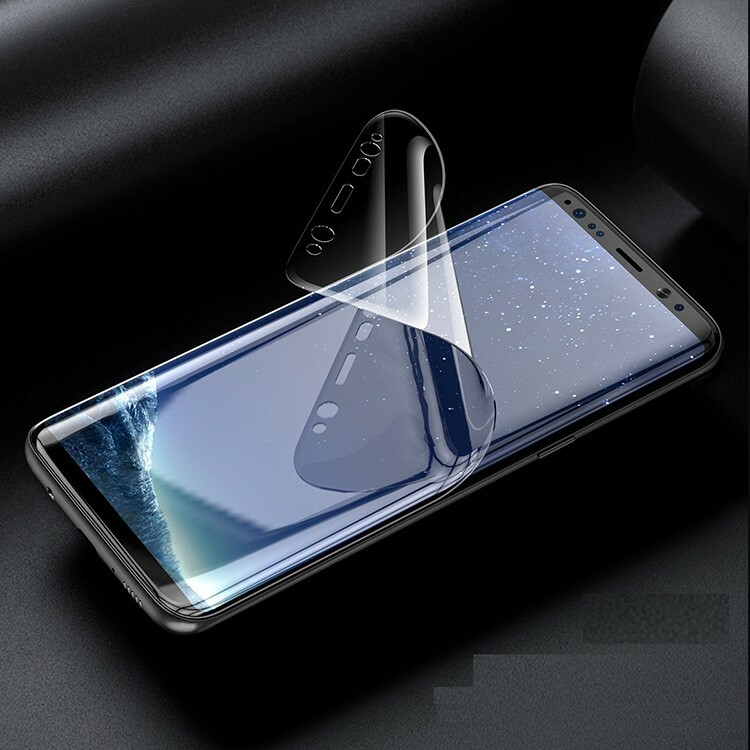
By coverage size
According to this criterion, all protective film materials are divided into three types, which should also be taken into account when deciding how to properly glue the protective film on a smartphone:
- Dimensionless. This type is a large polymer plate, from which a protective coating of the desired diagonal is cut.
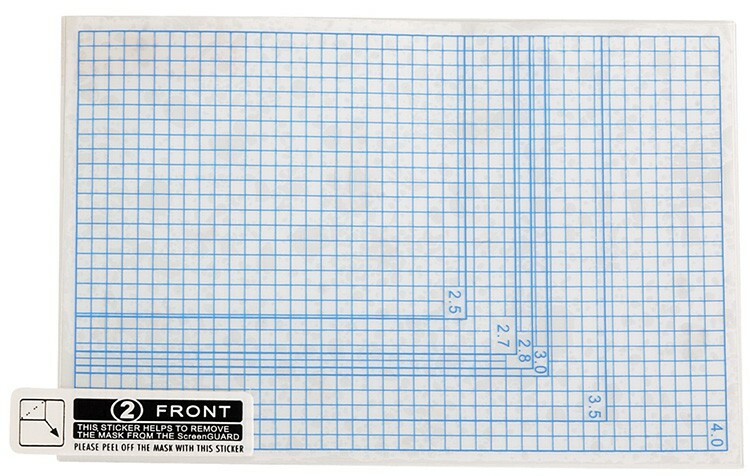
On the surface of dimensionless options, a mesh is applied for easy cutting of the desired diagonal - Fixed size. Universal accessories that are produced for a specific screen diagonal. The main advantage is the ability to use with any phone model.
- For a specific brand of smartphone. An ideal choice when there is a need to completely cover the entire glass with a protective layer. The disadvantage can be the overpriced, since most often such accessories are produced by the smartphone manufacturer.
FOR YOUR INFORMATION!
The main disadvantage of dimensionless models is the inability to accurately and evenly cut the film to the size of your own phone. This requires certain skills and accuracy.
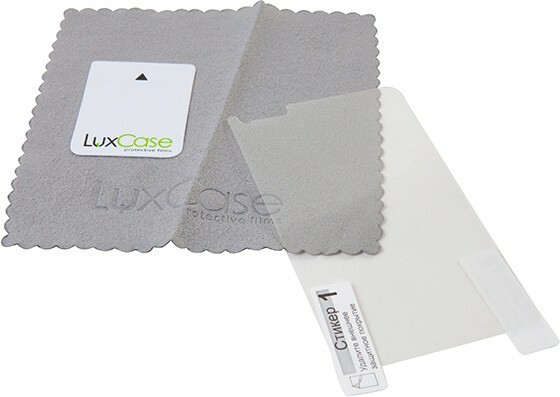
Appearance
Another criterion for dividing is the appearance, or more precisely, the design of the polymer coating. Most often, there are three options:
Glossywhich are the most common. Among the advantages of this type are:
- no distortion of the color palette;
- subtlety that makes the accessory almost invisible;
- the ability to hide existing minor scratches and prevent the appearance of new ones.
The disadvantages include the appearance of glare in bright sunlight, fingerprints, the effect of "sticking".
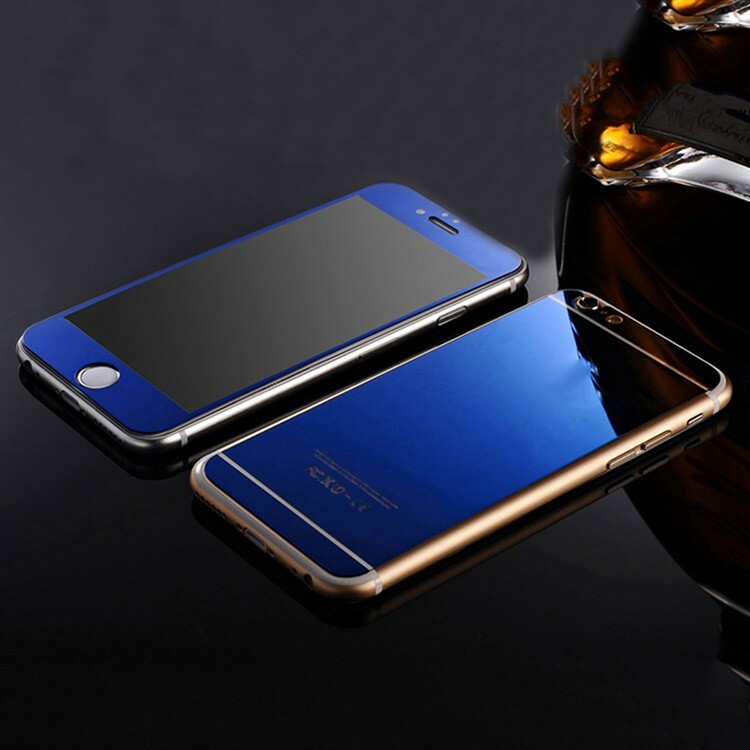
Matte, which are the second most popular variety, which also have their own advantages:
- almost complete absence of reflection;
- increased density, which provides greater reliability;
- improved tactile sensation, as the fingers slide well;
- lack of prints.
IMPORTANT!
One of the main disadvantages of matte models is the dulling of color rendition, since the dullness of the surface makes the colors dull. Also, these models are thick and therefore visible on the screen.
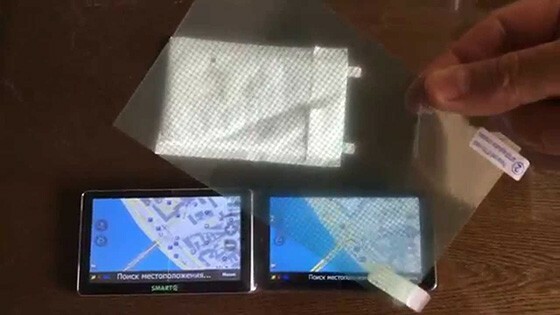
Mirrored, which are the least common. When glued, a mirror effect is created, which disappears when the display is activated. This film has more decorative appeal. Just like gloss, it is susceptible to prints and degrades color rendering like matte options.

DIY film sticker
Many users are wondering how to glue the protective film on the phone. This process is not complicated if you know the technology and carry out preparatory work, which includes choosing the optimal room and preparing the necessary tools.
How to properly glue the film on the phone: requirements for the room
The main danger when installing a protective coating is dust, since in this case the adhesion of the film decreases and is fraught with the formation of bubbles that are difficult to remove. You can achieve optimal humidity with a spray bottle. Also, rooms with a large amount of textiles, which are a generator of static that attract dust, are not suitable.
IMPORTANT!
In addition, experts, when telling how to glue a protective film on a phone screen, advise you to first wash the floor and wipe all horizontal surfaces with a wet rag.
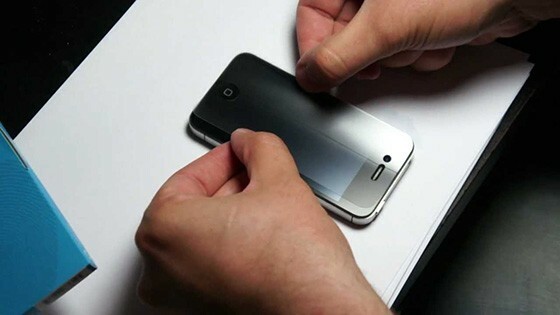
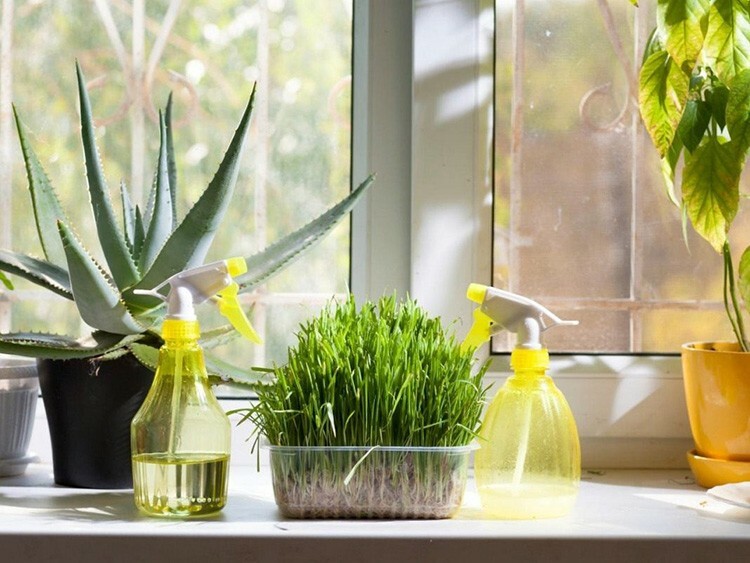
You should also provide sufficient lighting to see the smallest details and blemishes when gluing.
How to attach a screen protector to your phone: a list of tools
Before starting work, it is recommended to prepare the tools and lay them out on the work surface so that you do not waste time searching in the process. The list of required accessories is as follows:
- smartphone;
- film;
- liquid for degreasing the screen surface;
- plastic card;
- stationery knife;
- ruler (when using dimensionless models);
- lint-free napkin;
- tweezers to avoid leaving fingerprints;
- Scotch.
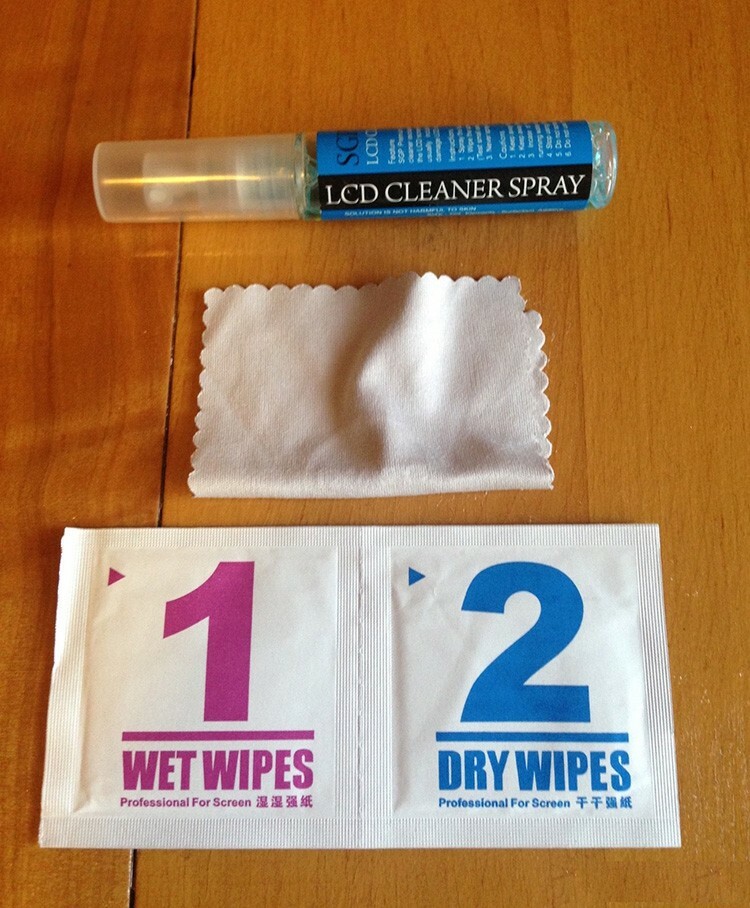
How to glue the film on your phone at home: degreasing the surface
To remove residual grease and dust, you need to wipe the display surface with a cloth moistened with alcohol or antistatic agent, while making sure that no liquid gets into the case. Final cleaning involves wiping with a lint-free cloth, after which you cannot touch the smartphone.

How to properly attach a screen protector to your phone: cut to size
If you bought a film for a specific smartphone model, then there is no need for trimming. Otherwise, you can use some tricks that experts suggest as advice on how to install a protective film on a smartphone screen:
- if you have an old accessory, it should be glued over the marking grid and simply cut out;
- if it is possible to use a copier, then you can make a full-size copy of the smartphone and cut off the film using this template;
- when cutting, leave a minimum of 1 mm around the edges for a perfect fit;
- curly cutouts of phone parts are marked with a protractor or officer's ruler;
- the final stage of cutting is to create holes for the speaker and buttons.
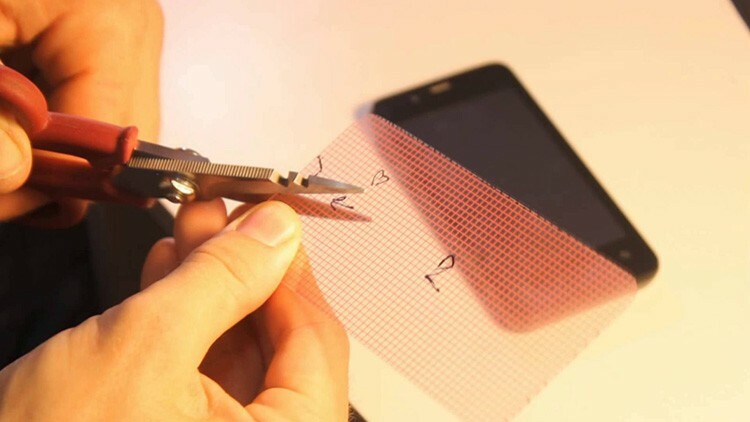
How to stick the film on your phone without bubbles: step by step instructions
After completing all the preparatory work, you can proceed directly to gluing. The question may arise, how to determine which side to glue the film on the phone? Some manufacturers apply special decals with numbers 1 and 2. There can also be a color division: the bottom layer is transparent, the top one is colored. How to properly stick the protective film, we will tell you in a short instruction. After you took it out of the package, perform the following manipulations.
| Illustration | Description of action |
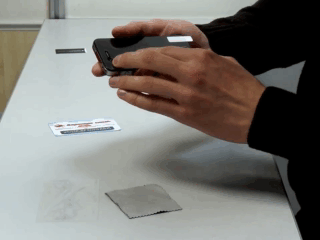 | Place the film side 1 on the phone screen and determine how accurately it fits. |
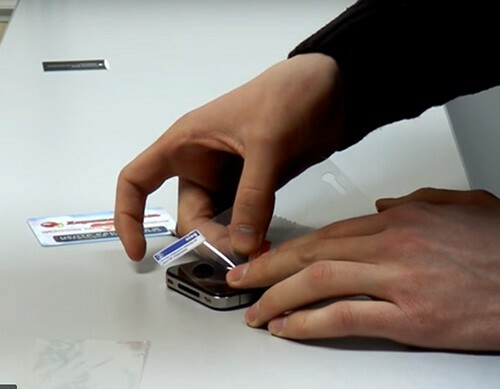 | Align the right edge of the film with the edge of the phone and begin to fold back the protective sticker. It is best to do this lengthwise. |
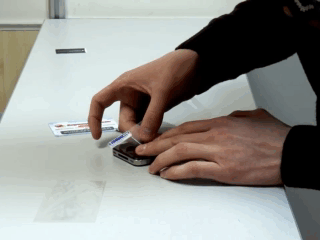 | Stick the released edge to the display, making sure that the film lies flat along the entire length of the side. |
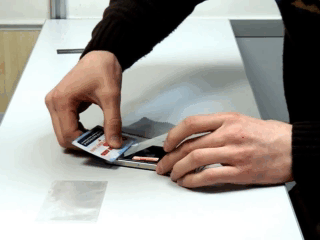 | Gradually remove the protective layer and stick the film, using a card or ruler to help avoid bubbles. It is recommended to do this from top to bottom so that you can glue with your fingers without touching the adhesive layer. |
 | After finishing the bonding, remove the top protective layer. |
How to glue the film on your phone without bubbles: removing artifacts
During the gluing process, there is a high probability of the appearance of bubbles, which can occur at the place where dust or dirt has entered. They should be "kicked out" with a plastic card or ruler, moving from the center to the edge.
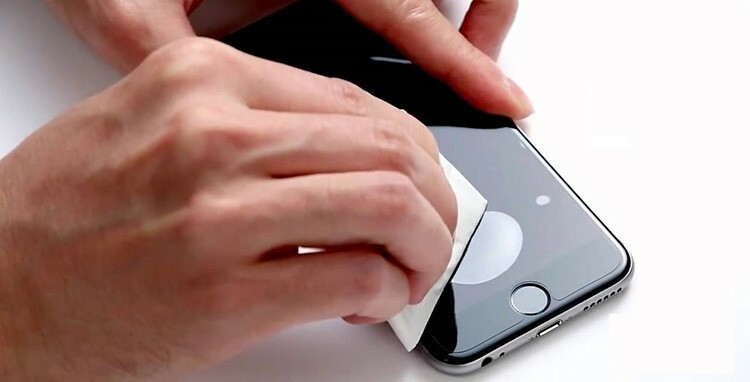
If too many defects are found, then the film can be peeled off and try to reapply, while you can use removed protective stickers that support the edges so that you do not touch the adhesive layer and the display surface with your hands. It should be remembered that repeating the procedure is not recommended more than three times, since the quality of adhesion decreases.
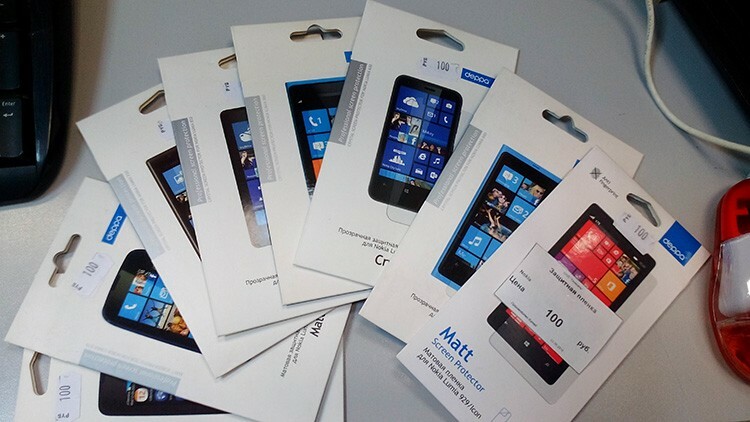
How to glue the film, or some useful tips from the editor
There are several guidelines that will help you apply the protective accessory correctly and will extend its life. Helpful advice from experts:
- it is undesirable to stick the film back to back to the edge of the screen;
- in case of unsuccessful adhesion, it is allowed to remove the protective layer and rinse under water to remove dust particles;
- it is best to apply the accessory immediately after purchasing a new device;
- to completely remove dust from the screen, you can use paper tape;
- during operation, it is recommended to wipe the film with wet wipes.
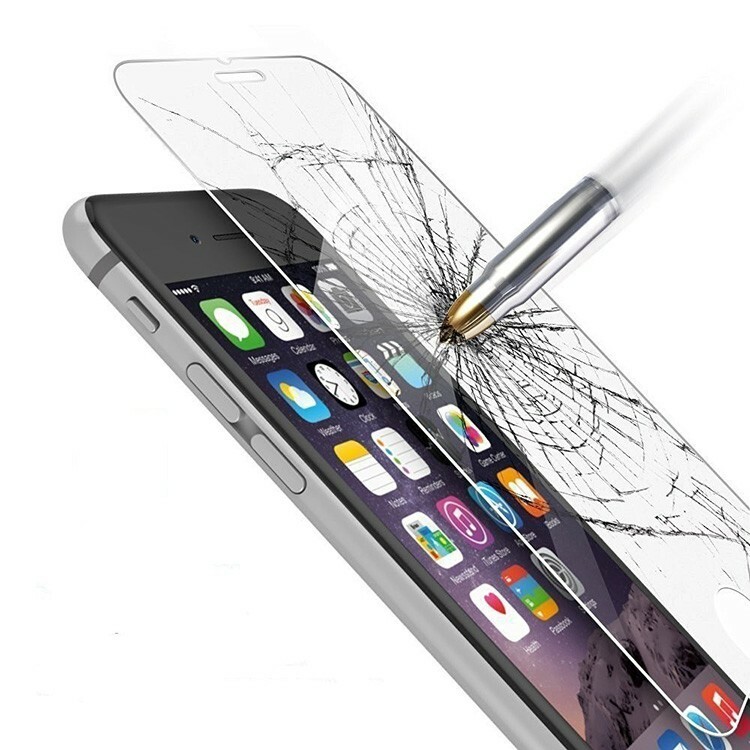
Which is better - glass or film
The protective glass, which has similar functions to prevent damage to the display, is a replacement for films. According to its characteristics, this accessory is much better than a simple film coating, since it has an increased durability, is not afraid of falling from a great height, does not lead to color distortion and has a longer duration service life. It is also easier to stick the protective glass on your own, as you can see after watching the presented video. Owners of expensive flagships can be advised to purchase high-quality glass instead of film, which will save the phone from damage and expensive repairs.
